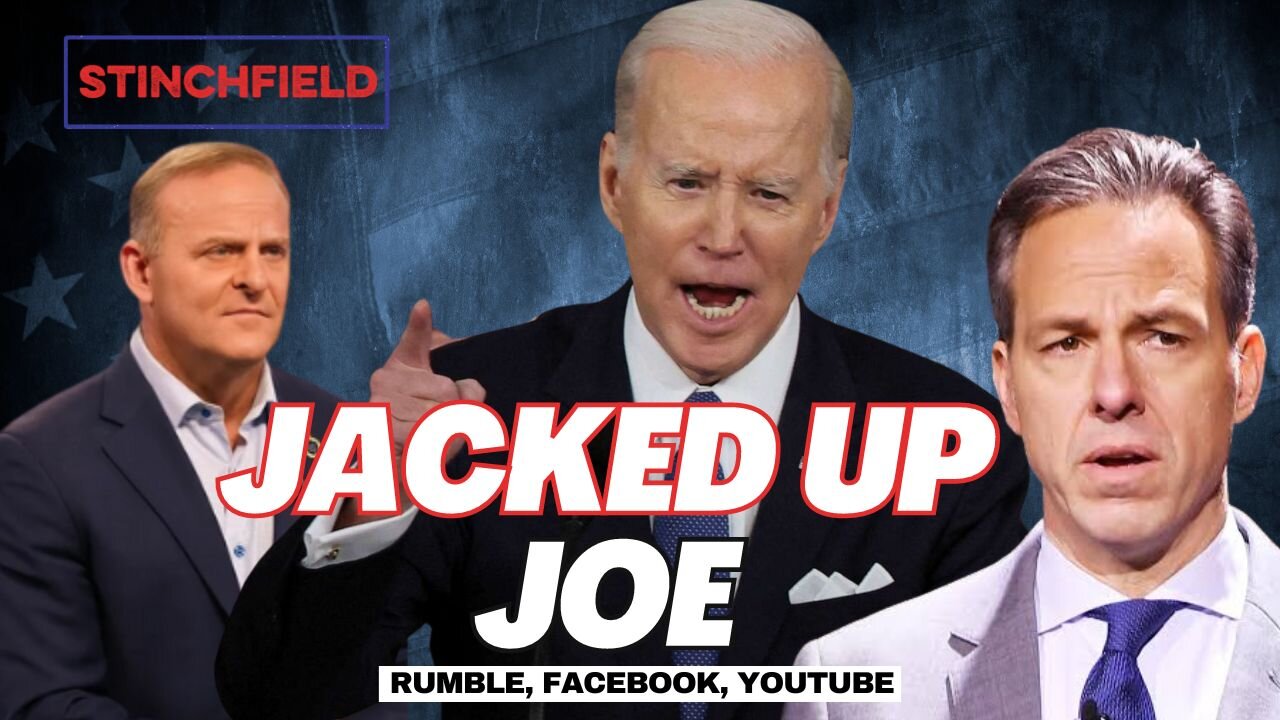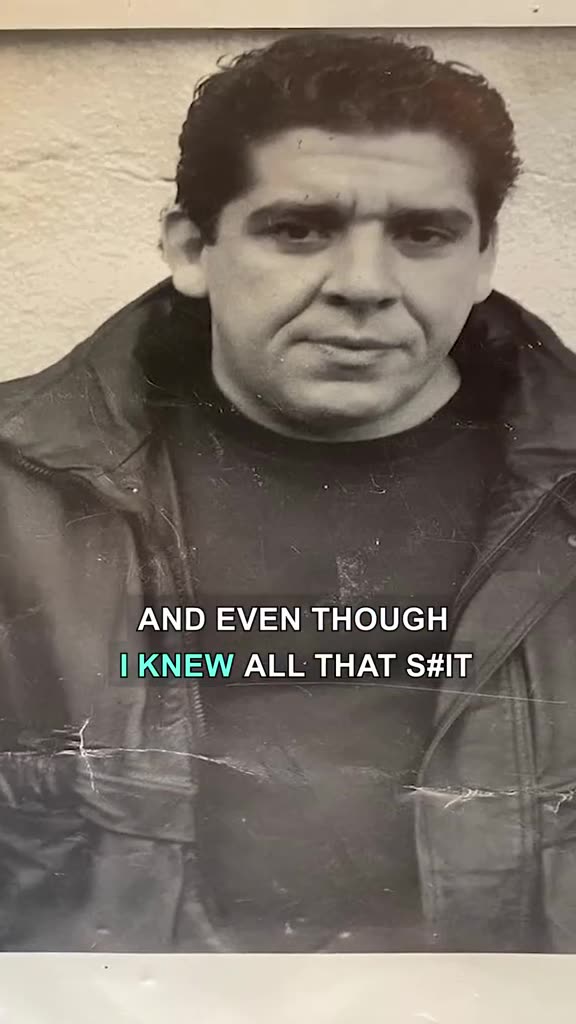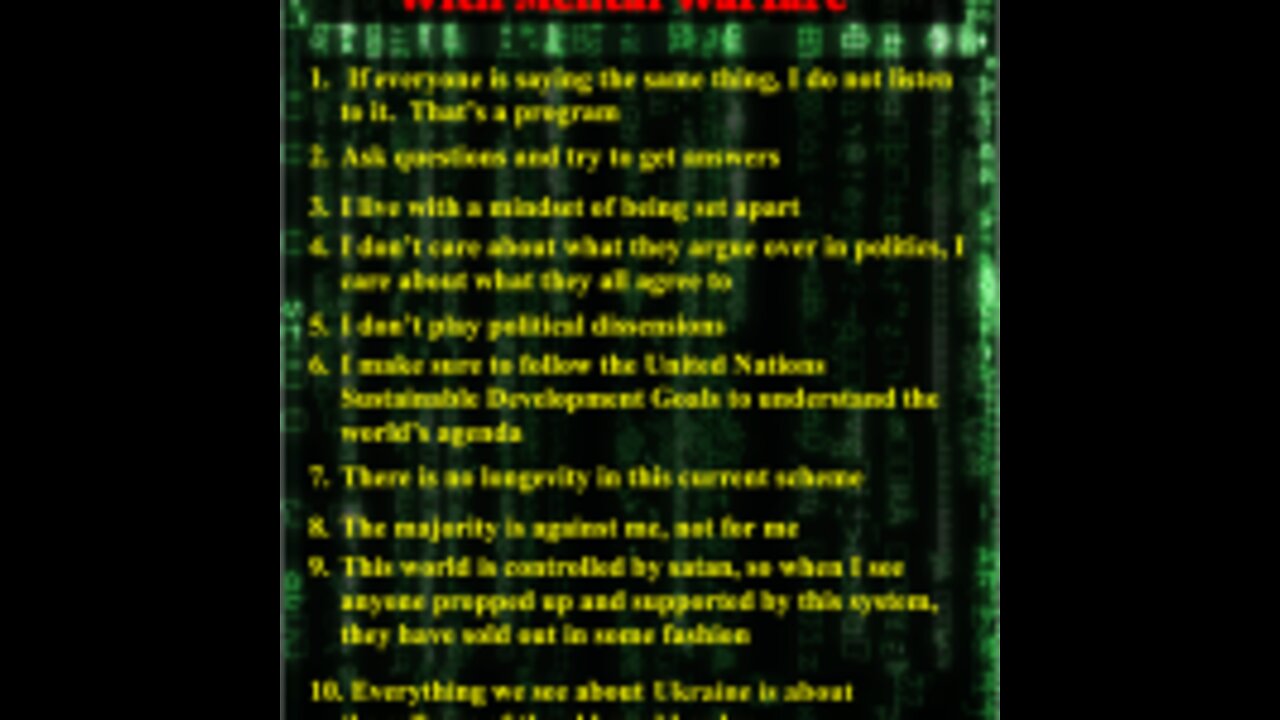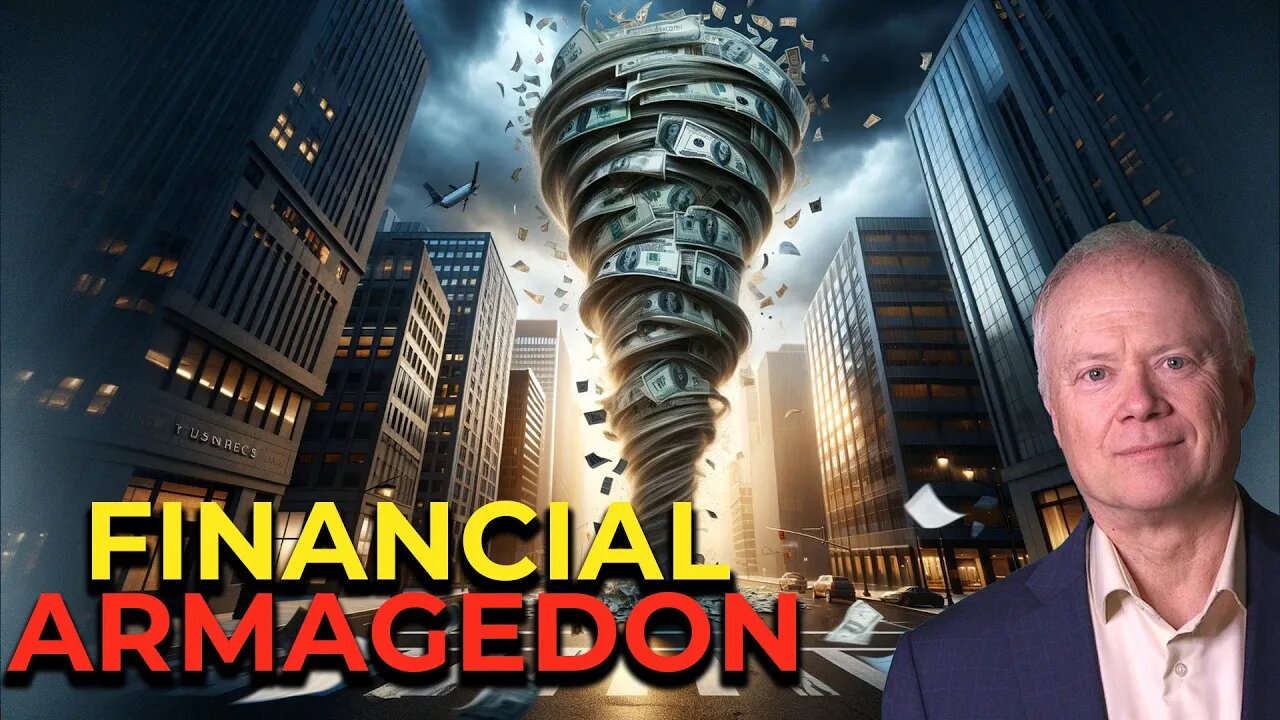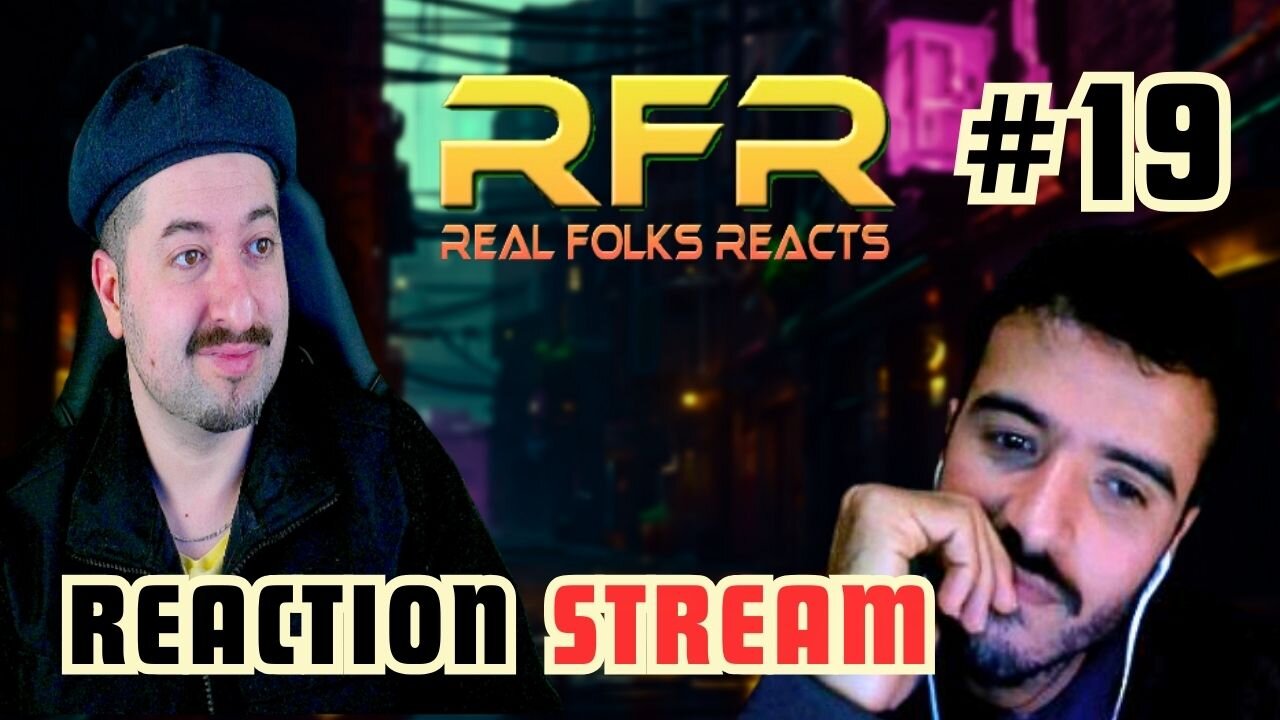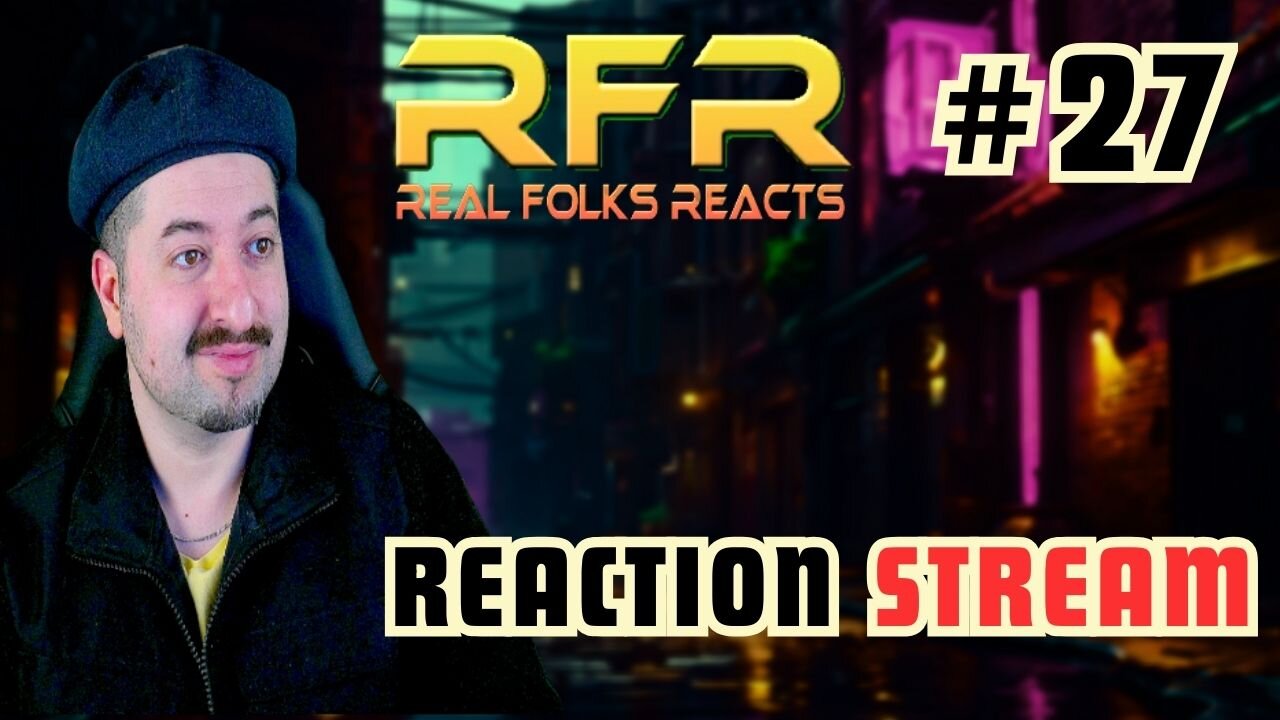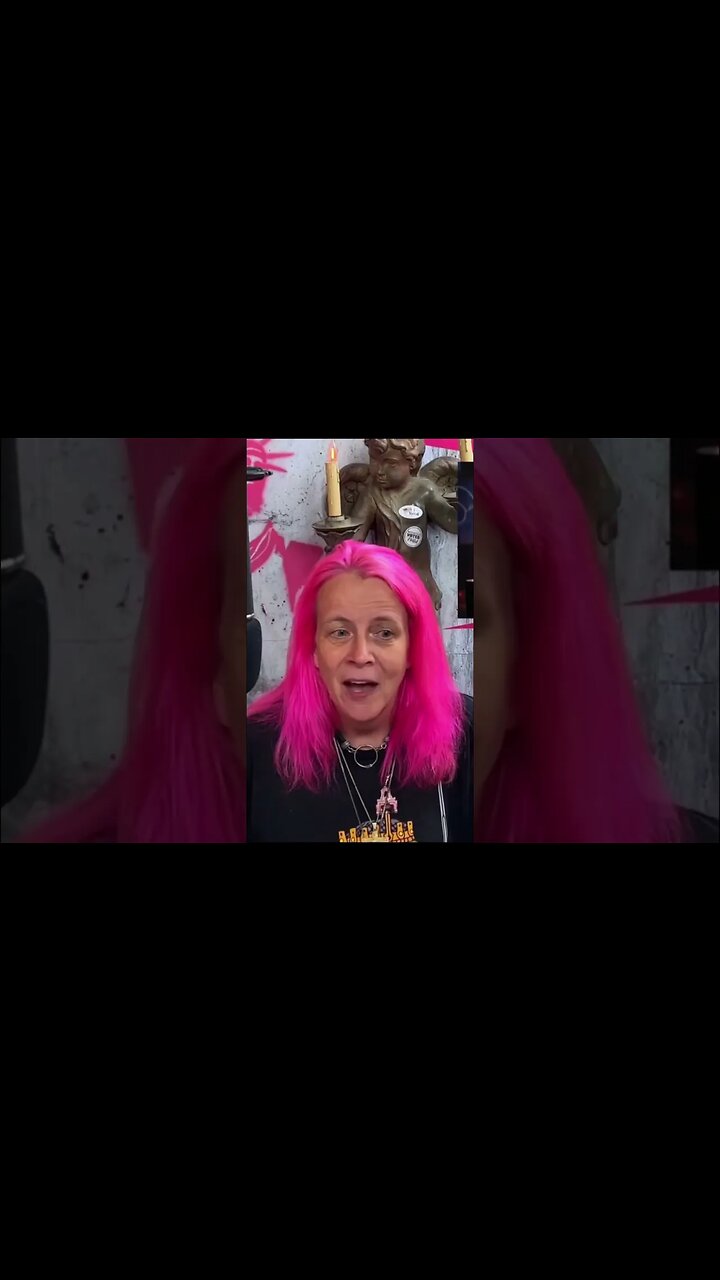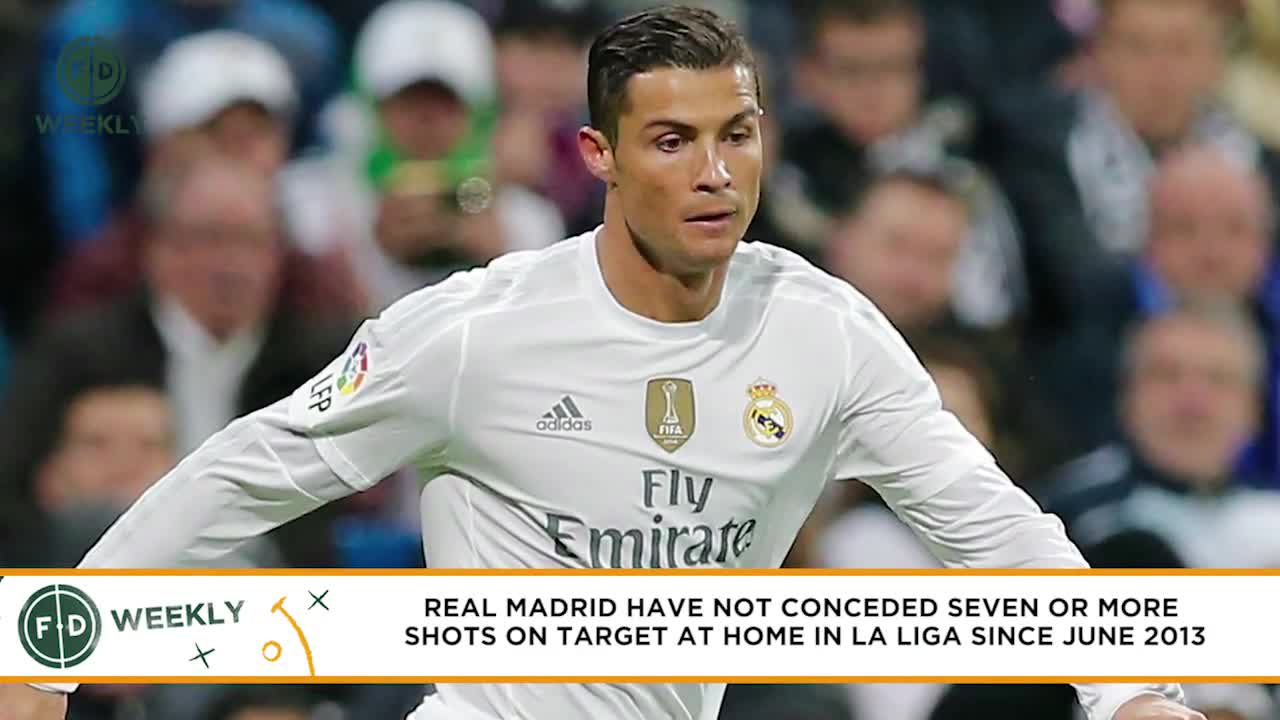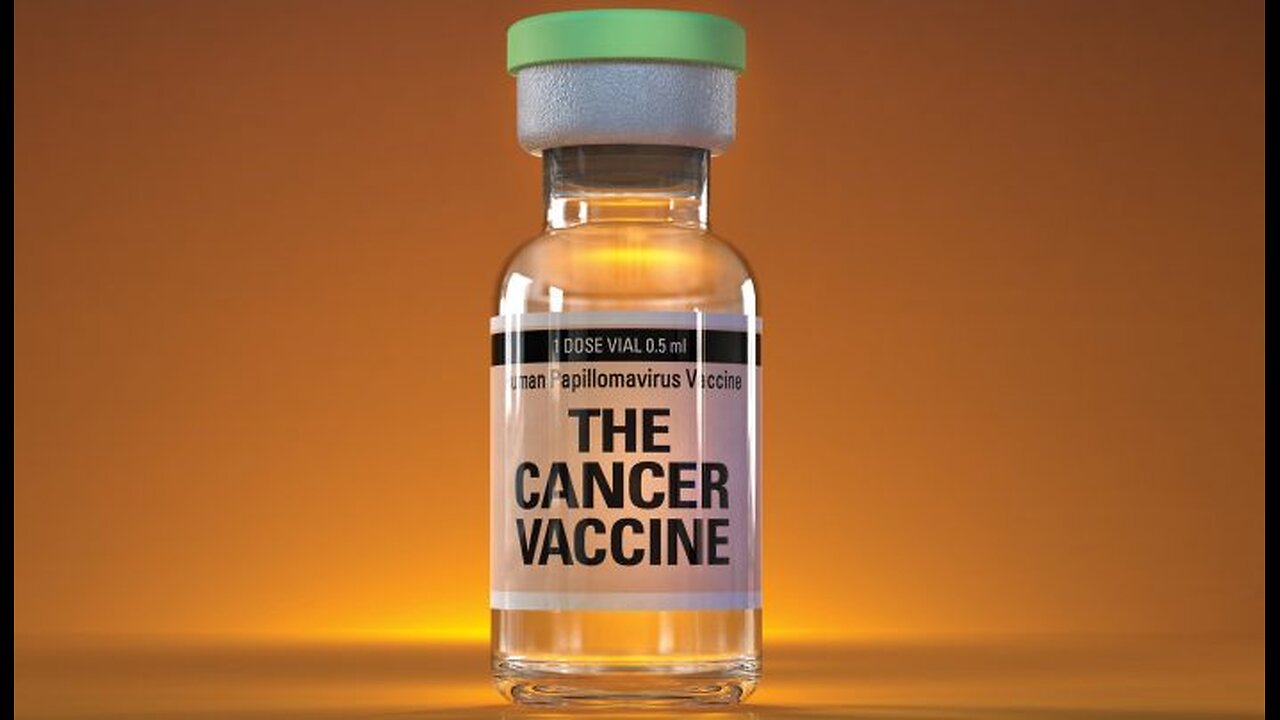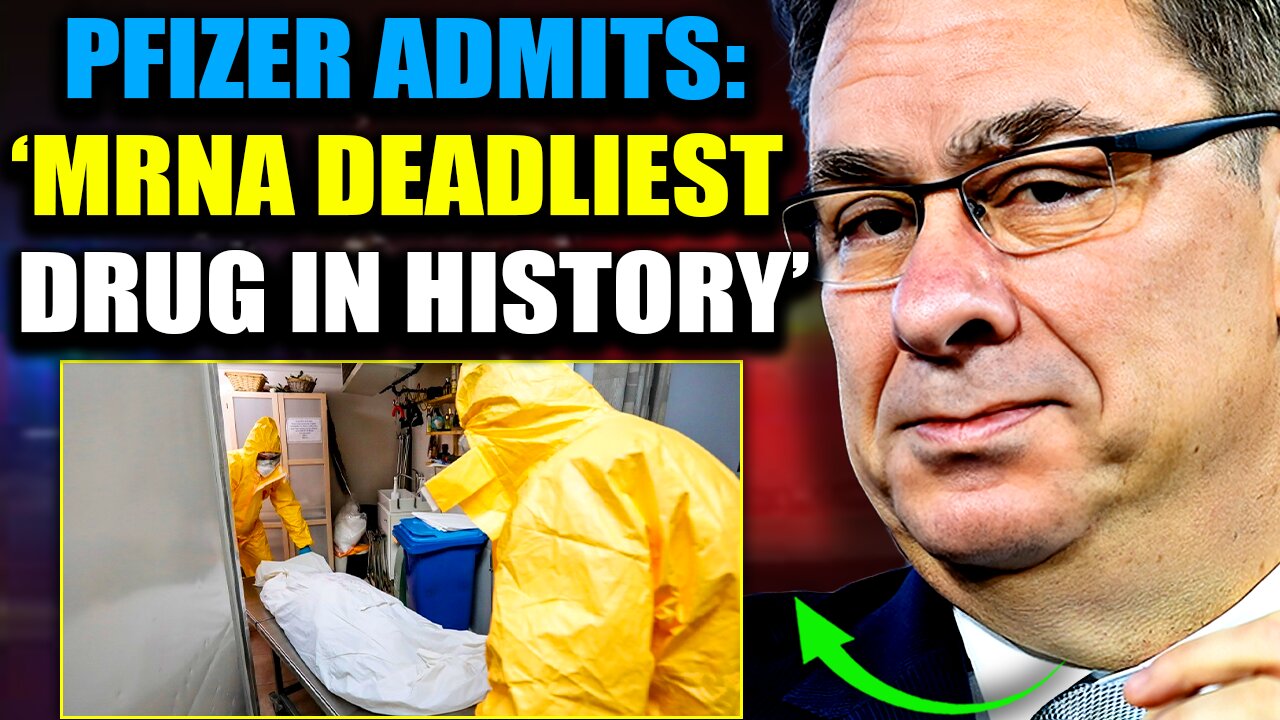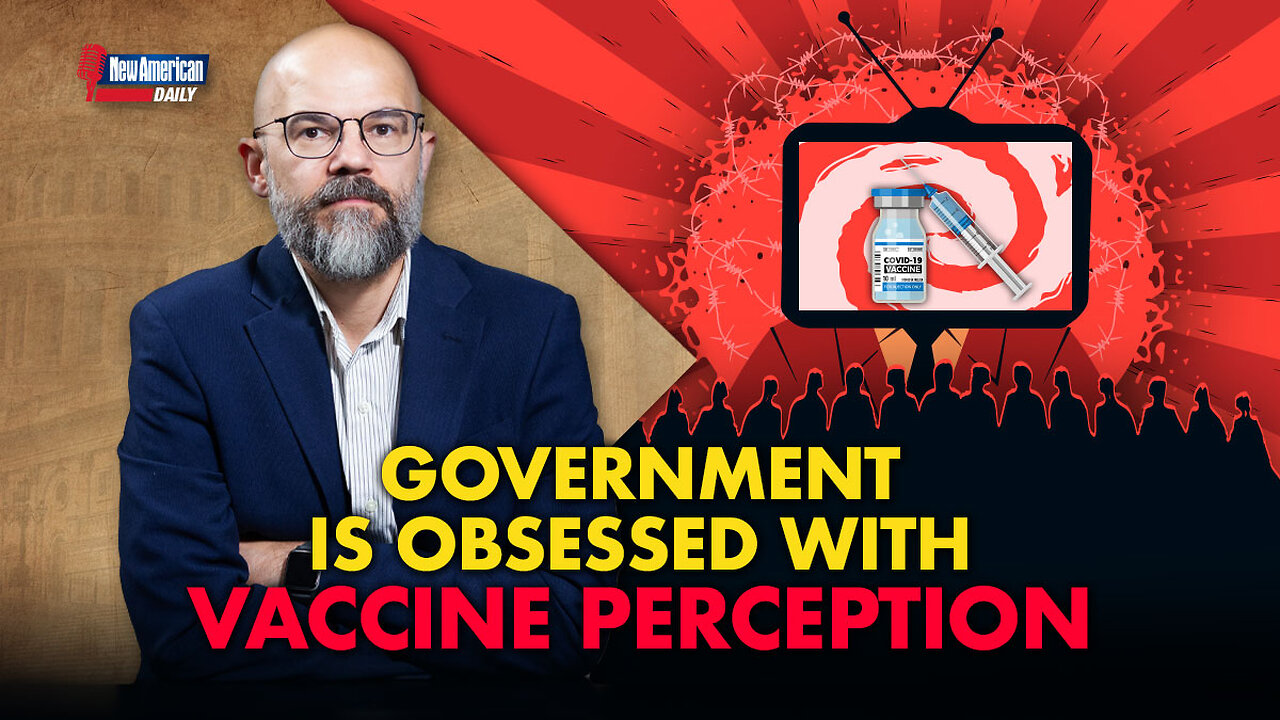Watch Host’s Face As Melinda Gates Reveals Real Reason Behind Divorce From Bill
The Real Drug Lords Are Not Who You Think They Are
The CIA & drugs: https://thememoryhole.substack.com/p/the-cia-guide-to-ruining-someones
An in-depth exploration of the intricate web underlying the narcotics trade. Delivered by former CIA official John Stockwell, the presentation meticulously traces the evolution of this illicit business, beginning with the Opium Wars in China and extending through pivotal historical moments such as American support to Mafia and crime syndicates during and post-World War II.
Stockwell's narrative doesn't shy away from detailing the French narcotics involvement in Indo-China and the subsequent assumption of these operations by the United States during the Vietnam War. The presentation extends its gaze into the contemporary era, shedding light on how entities like the CIA and international banks play roles in fostering and profiting from the global narcotics trade.
A particular emphasis is placed on exploring the involvement of prominent figures like George Bush and Oliver North in these operations. Recorded on June 25, 1988, this comprehensive and thought-provoking exposition offers a deep dive into the history, structure, and operations of the narcotics trade, exposing connections and dynamics that span generations.
The Opium Wars (simplified Chinese: 鸦片战争; traditional Chinese: 鴉片戰爭 Yāpiàn zhànzhēng) were two conflicts waged between China and Western powers during the mid-19th century.
The First Opium War was fought from 1839 to 1842 between China and Britain. It was triggered by the Chinese government's campaign to enforce its prohibition of opium, which included destroying opium stocks owned by British merchants and the British East India Company. The British government responded by sending a naval expedition to force the Chinese government to pay reparations and allow the opium trade. [1] The Second Opium War was waged by Britain and France against China from 1856 to 1860. It resulted in the legalisation of opium in China. [2]
In each war, the superior military advantages enjoyed by European forces led to several easy victories over the Chinese military, with the consequence that China was compelled to sign the unequal treaties to grant favourable tariffs, trade concessions, reparations and territory to Western powers. The two conflicts, along with the various treaties imposed during the "century of humiliation", weakened the Chinese government's authority and forced China to open specified treaty ports (including Shanghai) to Western merchants.[3][4] In addition, China ceded sovereignty over Hong Kong to the British Empire, which maintained control over the region until 1997. During this period, the Chinese economy also contracted slightly as a result of the wars, though the Taiping Rebellion and Dungan Revolt had a much larger economic effect.[5]
First Opium War
Main article: First Opium War
The First Opium War broke out in 1839 between China and Britain and was fought over trading rights (including the right of free trade) and Britain's diplomatic status among Chinese officials. In the eighteenth century, China enjoyed a trade surplus with Europe, trading porcelain, silk, and tea in exchange for silver. By the late 17th century, the British East India Company (EIC) expanded the cultivation of opium in the Bengal Presidency, selling it to private merchants who transported it to China and covertly sold it on to Chinese smugglers.[6] By 1797, the EIC was selling 4,000 chests of opium (each weighing 77 kg) to private merchants per annum.[7]
In earlier centuries, opium was utilised as an medicine with anesthetic qualities, but new Chinese practices of smoking opium recreationally increased demand tremendously and often led to smokers developing addictions. Successive Chinese emperors issued edicts making opium illegal in 1729, 1799, 1814, and 1831, but imports grew as smugglers and colluding officials in China sought profit.[8] Some American merchants entered the trade by smuggling opium from Turkey into China, including Warren Delano Jr., the grandfather of twentieth-century President Franklin D. Roosevelt, and Francis Blackwell Forbes; in American historiography this is sometimes referred to as the Old China Trade.[9] By 1833, the Chinese opium trade soared to 30,000 chests.[7] British and American merchants sent opium to warehouses in the free-trade port of Canton, and sold it to Chinese smugglers.[8][10]
In 1834, the EIC's monopoly on British trade with China ceased, and the opium trade burgeoned. Partly concerned with moral issues over the consumption of opium and partly with the outflow of silver, the Daoguang Emperor charged Governor General Lin Zexu with ending the trade. In 1839, Lin published in Canton an open letter to Queen Victoria requesting her cooperation in halting the opium trade. The letter never reached the Queen.[11] It was later published in The Times as a direct appeal to the British public for their cooperation.[12] An edict from the Daoguang Emperor followed on 18 March,[13] emphasising the serious penalties for opium smuggling that would now apply henceforth. Lin ordered the seizure of all opium in Canton, including that held by foreign governments and trading companies (called factories),[14] and the companies prepared to hand over a token amount to placate him.[15][page needed] Charles Elliot, Chief Superintendent of British Trade in China, arrived 3 days after the expiry of Lin's deadline, as Chinese troops enforced a shutdown and blockade of the factories. The standoff ended after Elliot paid for all the opium on credit from the British government (despite lacking official authority to make the purchase) and handed the 20,000 chests (1,300 metric tons) over to Lin, who had them destroyed at Humen.[16]
Elliott then wrote to London advising the use of military force to resolve the dispute with the Chinese government. A small skirmish occurred between British and Chinese warships in the Kowloon Estuary on 4 September 1839.[14] After almost a year, the British government decided, in May 1840, to send a military expedition to impose reparations for the financial losses experienced by opium traders in Canton and to guarantee future security for the trade. On 21 June 1840, a British naval force arrived off Macao and moved to bombard the port of Dinghai. In the ensuing conflict, the Royal Navy used its superior ships and guns to inflict a series of decisive defeats on Chinese forces.[17]
The war was concluded by the Treaty of Nanking (Nanjing) in 1842, the first of the Unequal treaties between China and Western powers.[18] The treaty ceded the Hong Kong Island and surrounding smaller islands to Britain, and established five cities as treaty ports open to Western traders: Shanghai, Canton, Ningbo, Fuzhou, and Xiamen (Amoy).[19] The treaty also stipulated that China would pay a twenty-one million dollar payment to Britain as reparations for the destroyed opium, with six million to be paid immediately, and the rest through specified installments thereafter.[20] Another treaty the following year gave most favoured nation status to Britain and added provisions for British extraterritoriality, making Britain exempt from Chinese law.[18] France secured several of the same concessions from China in the Treaty of Whampoa in 1844.[21]
British bombardment of Canton from the surrounding heights, 29 May 1841. Watercolour painting by Edward H. Cree (1814–1901), Naval Surgeon to the Royal Navy.
British bombardment of Canton from the surrounding heights, 29 May 1841. Watercolour painting by Edward H. Cree (1814–1901), Naval Surgeon to the Royal Navy.
The 98th Regiment of Foot at the attack on Chin-Kiang-Foo (Zhenjiang), 21 July 1842, resulting in the defeat of the Manchu government. Watercolour by military illustrator Richard Simkin (1840–1926).
The 98th Regiment of Foot at the attack on Chin-Kiang-Foo (Zhenjiang), 21 July 1842, resulting in the defeat of the Manchu government. Watercolour by military illustrator Richard Simkin (1840–1926).
Second Opium War
Main article: Second Opium War
Depiction of the 1860 battle of Taku Forts. Book illustration from 1873.
In 1853, northern China was convulsed by the Taiping Rebellion, which established its capital at Nanjing. In spite of this, a new Imperial Commissioner, Ye Mingchen, was appointed at Canton, determined to stamp out the opium trade, which was still technically illegal. In October 1856, he seized the Arrow, a ship claiming British registration, and threw its crew into chains. Sir John Bowring, Governor of British Hong Kong, called up Rear Admiral Sir Michael Seymour's East Indies and China Station fleet, which, on 23 October, bombarded and captured the Pearl River forts on the approach to Canton and proceeded to bombard Canton itself, but had insufficient forces to take and hold the city. On 15 December, during a riot in Canton, European commercial properties were set on fire and Bowring appealed for military intervention.[19] The execution of a French missionary inspired support from France.[22]
Britain and France now sought greater concessions from China, including the legalisation of the opium trade, expanding of the transportation of coolies to European colonies, opening all of China to British and French citizens and exempting foreign imports from internal transit duties.[23] The war resulted in the 1858 Treaty of Tientsin (Tianjin), in which the Chinese government agreed to pay war reparations for the expenses of the recent conflict, open a second group of ten ports to European commerce, legalise the opium trade, and grant foreign traders and missionaries rights to travel within China.[19] After a second phase of fighting which included the sack of the Old Summer Palace and the occupation of the Forbidden City palace complex in Beijing, the treaty was confirmed by the Convention of Peking in 1860.[citation needed]
See also
Destruction of opium at Humen
History of opium in China
References
Chen, Song-Chuan (1 May 2017). Merchants of War and Peace. Hong Kong University Press. ISBN 978-988-8390-56-4.
Feige1, Miron2, Chris1, Jeffrey A.2 (2008). "The opium wars, opium legalization and opium consumption in China". Applied Economics Letters. 15: 911–913 – via Scopus.
Taylor Wallbank; Bailkey; Jewsbury; Lewis; Hackett (1992). "A Short History of the Opium Wars". Civilizations Past And Present. Chapter 29: "South And East Asia, 1815–1914" – via Schaffer Library of Drug Policy.
Kenneth Pletcher. "Chinese history: Opium Wars". Encyclopædia Britannica Online.
Desjardins, Jeff (15 September 2017). "Over 2000 years of economic history, in one chart". World Economic Forum. Retrieved 28 November 2021.
"Opium trade – History & Facts". Encyclopedia Britannica. Retrieved 3 July 2018.
Hanes, Wiliam Travis III; Sanello, Frank (2004). The Opium Wars: The Addiction of One Empire and the Corruption of Another. United States: Sourcebooks. pp. 21, 24, 25. ISBN 978-1402201493.
"A Century of International Drug Control" (PDF). UNODC.org.
Meyer, Karl E. (28 June 1997). "The Opium War's Secret History". The New York Times. Retrieved 3 July 2018.
Haythornthwaite, Philip J., The Colonial Wars Source Book, London, 2000, p.237. ISBN 1-84067-231-5
Fay (1975), p. 143.
Platt (2018), p. online.
Hanes & Sanello 2002, p. 43.
Haythornthwaite, 2000, p.237.
Hanes, W. Travis; Sanello, Frank (2002). Opium Wars: The Addiction of One Empire and the Corruption of Another. Sourcebooks. ISBN 9781402201493.
"China Commemorates Anti-opium Hero". 4 June 2009. Archived from the original on 14 November 2013. Retrieved 18 March 2014.
Tsang, Steve (2007). A Modern History of Hong Kong. I. B. Tauris. pp. 3–13, 29. ISBN 1-84511-419-1.
Treaty of Nanjing inBritannica.
Haythornthwaite 2000, p. 239.
Treaty Of Nanjing (Nanking), 1842 on the website of the US-China Institute at University of Southern Carolina.
Xiaobing Li (2012). China at War: An Encyclopedia. ABC-CLIO. p. 468. ISBN 9781598844160.
"MIT Visualizing Cultures". visualizingcultures.mit.edu. Retrieved 9 September 2023.
Zhihong Shi (2016). Central Government Silver Treasury: Revenue, Expenditure and Inventory Statistics, ca. 1667–1899. BRILL. p. 33. ISBN 978-90-04-30733-9.
Cited references and further reading
Beeching, Jack. The Chinese Opium Wars (Harvest Books, 1975)
Fay, Peter Ward (1975). The Opium War, 1840–1842: Barbarians in the Celestial Empire in the Early Part of the Nineteenth Century and the War by Which They Forced Her Gates Ajar. University of North Carolina Press.
Gelber, Harry G. Opium, Soldiers and Evangelicals: Britain's 1840–42 War with China, and its Aftermath. Palgrave Macmillan, 2004.
Hanes, W. Travis and Frank Sanello. The Opium Wars: The Addiction of One Empire and the Corruption of Another (2014)
Kitson, Peter J. "The Last War of the Romantics: De Quincey, Macaulay, the First Chinese Opium War". Wordsworth Circle (2018) 49#3.
Lovell, Julia. The Opium War: Drugs, Dreams, and the Making of Modern China(2011).
Marchant, Leslie R. "The War of the Poppies", History Today (May 2002) Vol. 52 Issue 5, pp 42–49, online popular history
Platt, Stephen R. (2018). Imperial Twilight: The Opium War and the End of China's Last Golden Age. New York: Knopf. ISBN 9780307961730. 556 pp.
Kenneth Pomeranz, "Blundering into War" (review of Stephen R. Platt, Imperial Twilight: The Opium War and the End of China's Last Golden Age, Vintage), The New York Review of Books, vol. LXVI, no. 10 (6 June 2019), pp. 38–41.
Polachek, James M., The inner opium war (Harvard Univ Asia Center, 1992).
Wakeman, Frederic E. (1966). Strangers at the Gate: Social Disorder in South China, 1839–1861. Berkeley: University of California Press. ISBN 0520212398.
Waley, Arthur, ed. The Opium War Through Chinese Eyes (1960).
Wong, John Y. Deadly Dreams: Opium, Imperialism, and the Arrow War (1856–1860) in China. (Cambridge UP, 2002)
Yu, Miles Maochun. "Did China Have a Chance to Win the Opium War?" Military History in the News, July 3, 2018.
The United States government collaborated with the Italian Mafia during World War II and afterwards on several occasions.
Operation Underworld: Strikes and labor disputes in the eastern shipping ports
See also: Operation Underworld
During the early days of World War II, the U.S. Office of Naval Intelligence suspected that Italian and German agents were entering the United States through New York, and that these facilities were susceptible to sabotage. The loss of SS Normandie in February 1942, especially, raised fears and suspicions in the Navy about possible sabotage in the Eastern ports. A Navy Intelligence Unit, B3, assigned more than a hundred agents to investigate possible Benito Mussolini supporters within the predominantly Italian-American fisherman and dockworker population on the waterfront. Their efforts were fruitless, as the dockworkers and fishermen in the Italian Mafia-controlled waterfront were tight-lipped and distant to strangers.[1] The Navy contacted Meyer Lansky, a known associate of Salvatore C. Luciano and one of the top non-Italian associates of the Mafia,[2] about a deal with the Mafia boss Luciano. Luciano, also known as Lucky Luciano, was one of the highest-ranking Mafia both in Italy and the US and was serving a 30 to 50 years sentence for compulsory prostitution in the Clinton Prison.[3] To facilitate the negotiations, the State of New York moved Luciano from the Clinton prison to Great Meadow Correctional Facility, which is much closer to New York City.[4][5]
The State of New York, Luciano and the Navy struck a deal in which Luciano guaranteed full assistance of his organization in providing intelligence to the Navy. In addition, Luciano associate Albert Anastasia—who controlled the docks and ran Murder, Inc.—allegedly guaranteed no dockworker strikes throughout the war. In return, the State of New York agreed to commute Luciano's sentence.[6] Luciano's actual influence is uncertain, but the authorities did note that the dockworker strikes stopped after the deal was reached with Luciano.[7]
In the summer of 1945, Luciano petitioned the State of New York for executive clemency, citing his assistance to the Navy. Naval authorities, embarrassed that they had to recruit organized-crime to help in their war effort, declined to confirm Luciano's claim. However, the Manhattan District Attorney's office validated the facts and the state parole board unanimously agreed to recommend to the governor that Luciano be released and deported immediately.[8] On January 4, 1946, Governor Thomas E. Dewey, the former prosecutor who placed Luciano into prison, commuted Lucky Luciano's sentence on the condition that he did not resist deportation to Italy.[9] Dewey stated, “Upon the entry of the United States into the war, Luciano’s aid was sought by the Armed Services in inducing others to provide information concerning possible enemy attack. It appears that he cooperated in such effort, although the actual value of the information procured is not clear.”[10][7] Luciano was deported to his homeland Italy on February 9, 1946.[11] There was a media hype of Luciano's role after his deportation. The syndicated columnist and radio broadcaster Walter Winchell even reported in 1947 that Luciano would receive the Medal of Honor for his secret services.[12]
Operation Husky: The invasion of Sicily and its aftermath
See also: Allied invasion of Sicily
Italian Americans were very helpful in the planning and execution of the invasion of Sicily. The Mafia was involved in assisting the U.S. war efforts.[13] Luciano's associates found numerous Sicilians to help the Naval Intelligence draw maps of the harbors of Sicily and dig up old snapshots of the coastline.[14][15] Vito Genovese, another Mafia boss, offered his services to the U.S. Army and became an interpreter and advisor to the U.S. Army military government in Naples. He quickly became one of AMGOT’s most trusted employees.[16] Through the Navy Intelligence’s Mafia contacts from Operation Underworld, the names of Sicilian underworld personalities and friendly Sicilian natives who could be trusted were obtained and actually used in the Sicilian campaign.[17]
The Joint Staff Planners (JSP) for the US Joint Chiefs of Staff drafted a report titled Special Military Plan for Psychological Warfare in Sicily that recommended the “Establishment of contact and communications with the leaders of separatist nuclei, disaffected workers, and clandestine radical groups, e.g., the Mafia, and giving them every possible aid.” The report was approved by the Joint Chiefs of Staff in Washington on April 15, 1943.[18]
Assassination attempts on Fidel Castro
Main article: Assassination attempts on Fidel Castro
See also: Sam Giancana and Santo Trafficante Jr.
[icon]
This section needs expansion. You can help by adding to it. (April 2018)
Controversy and criticism
There was considerable public controversy during the late days of the war and afterwards surrounding the connection between the U.S. Government and the Mafia.[19][20] In 1953, Governor Dewey, pushed by allegations that he sold Luciano his pardon, ordered a confidential investigation by the state's commissioner of investigation, William Herlands. Herlands released his 2,600-page report in 1954, which offered proof of Luciano's involvement with the Navy without finding any wrongdoing by Dewey.[21] Naval officials reviewed the report and requested Dewey to not release it on the grounds that it would be a public-relations disaster for the Navy and it might damage future similar war efforts. Dewey agreed, and the report was not released until after his death in the mid-1970s.[20][22]
Notable scholars of the topic such as Selwyn Raab and Tim Newark have questioned the effectiveness of the Mafia in their help during Operation Husky.[23][24] Raab states that Luciano could not have helped during the invasion of Sicily, as he was out of touch with the Sicilian Mafia, and neither he nor the Cosa Nostra had any significant contribution to the Allied victory in Sicily. On the other hand, another scholar on the topic, Ezio Costanzo, alleges that Congressman Horan revealed that Luciano was visited 11 times by Naval Intelligence officers throughout his sentence.[25] In addition, Costanzo states that Commander Haffenden of Naval Intelligence Section F (foreign intelligence) stated in numerous reports how his men were interviewing many native-born Italians and that they were cooperating because of Luciano.[26]
Footnotes
Raab. p.76
U.S. Treasury Department Bureau of Narcotics. p. 101
U.S. Treasury Department Bureau of Narcotics. p. 809
Kelly. p. 107
Costanzo. pp.51-56
Newark. pp. 99-111
Campbell. pp. 111-127
Raab. p. 78
"DEWEY COMMUTES LUCIANO SENTENCE,", The New York Times, 04 January 1946, Retrieved 25 March 2013
Costanzo. p.42
Costanzo. p.41
Raab. pp.78-79
Luconi. p.5
Raab. p.77
Newark. p.127
McCoy. p. 20
Newark. p.126
Newark. p.134-135
Costanzo. p.64
Raab. p.79
Costanzo. p.66
Costanzo. p.40
Costanzo. p.77
Newark. pp.288-289
Costanzo. p.44
Costanzo. p.59
References
Campbell, Rodney. The Luciano Project: The Secret Wartime Collaboration of the Mafia and the U.S. Navy. New York: McGraw-Hill, 1977. ISBN 9780070096745
Costanzo, Ezio. The Mafia and the Allies: Sicily 1943 and the Return of the Mafia. New York: Enigma Books, 2007. ISBN 9781936274949
Costanzo, Ezio. Mafia & Alleati, Servizi segreti americani e sbarco in Sicilia. Da Lucky Luciano ai sindaci uomini d'onore. Le Nove Muse Editrice, 2006
Kelly, Robert. The Upperworld and the Underworld: Case Studies of Racketeering and Business Infiltrations in the United States. New York: Kluwer Academic / Plenum Publishers, 1999.
Luconi, Stefano. "Italian Americans and the Invasion of Sicily in World War II." Italian Americana 25.1 (2007): 5-22.
McCoy, Alfred W. The Politics of Heroin in Southeast Asia. New York: Harper and Row, 1972.
New York Times. "DEWEY COMMUTES LUCIANO SENTENCE." 4 January 1946. New York Times. 25 March 2013.
Newark, Tim. Mafia Allies: The True Story of America's Secret Alliance with the Mob in World War II. Saint Paul: Zenith Press, 2007, ISBN 9780760324578.
Raab, Selwyn. Five Families: The Rise, Decline, and Resurgence of America's Mast Powerful Mafia Empires. New York: Thomas Dunne Books, 2005, ISBN 9780312300944
U.S. Treasury Department Bureau of Narcotics. Mafia. New York: HarperCollins Publishers, 2007.
The French Connection was a scheme through which heroin was smuggled from Indochina through Turkey to France and then to the United States and Canada. The operation started in the 1930s, reached its peak in the 1960s, and was dismantled in the 1970s. It was responsible for providing the vast majority of the heroin used in the United States at the time. The operation was headed by Corsicans Antoine Guérini and Paul Carbone (with associate François Spirito). It also involved Auguste Ricord, Paul Mondoloni and Salvatore Greco.[citation needed]
History
The 1930s, '40s, and '50s
Illegal heroin labs were first discovered near Marseille, France, in 1937. These labs were run by Corsican gang leader Paul Carbone. For years, the Corsican underworld had been involved in the manufacturing and trafficking of heroin, primarily to the United States.[1] It was this heroin network that eventually became known as "the French Connection".
The Corsican Gang was protected by the Central Intelligence Agency (CIA) and the SDECE after World War II in exchange for working to prevent French Communists from bringing the Old Port of Marseille under their control.[2]
Historically, the raw material for most of the heroin consumed in the United States came from Indochina, then Turkey. Turkish farmers were licensed to grow opium poppies for sale to legal drug companies, but many sold their excess to the underworld market, where it was manufactured into heroin and transported to the United States. The morphine paste was refined in Corsican laboratories in Marseille, one of the busiest ports in the western Mediterranean Sea, known for shipping all types of illegal goods. The Marseille heroin was considered high quality.
The convenience of the port at Marseille and the frequent arrival of ships from opium-producing countries made it easy to smuggle the morphine base to Marseille from the Far East or the Near East. The French underground would then ship large quantities of heroin from Marseille to New York City.
The first significant post-World War II seizure was made in New York on February 5, 1947, when seven pounds (3 kg) of heroin were seized from a Corsican sailor disembarking from a vessel that had just arrived from France.
It soon became clear that the French underground was increasing not only its participation in the illegal trade of opium, but also its expertise and efficiency in heroin trafficking. On March 17, 1947, 28 pounds (13 kg) of heroin were found on the French liner St. Tropez. On January 7, 1949, more than 50 pounds (22.75 kg) of opium and heroin were seized on the French ship Batista.
After Paul Carbone's death, the Guérini clan was the ruling dynasty of the Unione Corse and had systematically organized the smuggling of opium from Turkey and other Middle Eastern countries. The Guérini clan was led by Marseille mob boss Antoine Guérini and his brothers, Barthelemy, Francois and Pascal.[citation needed]
In October 1957, a meeting between Sicilian Mafia and American Mafia members was held at the Grand Hotel et des Palmes in Palermo to discuss the international illegal heroin trade in the French Connection.[3]
The 1960s
The first major French Connection seizure in the 1960s began that June, when an informant told a drug agent in Lebanon that Mauricio Rosal, the Guatemalan Ambassador to Belgium, the Netherlands and Luxembourg, was smuggling morphine base from Beirut to Marseille. Narcotics agents had been seizing about 200 pounds (90 kg) of heroin in a typical year, but intelligence showed that the Corsican traffickers were smuggling in 200 pounds (90 kg) every other week. Rosal alone, in one year, had used his diplomatic status to bring in about 440 pounds (200 kg).
The Federal Bureau of Narcotics's 1960 annual report estimated that from 2,600 to 5,000 pounds (1,200 to 2,300 kg) of heroin were coming into the United States annually from France. The French traffickers continued to exploit the demand for their illegal product, and by 1969, they were supplying the United States with 80 percent of its heroin.[4]
On April 26, 1968, a record setting seizure was made, 246 lb (111.6 kg) of heroin smuggled to New York concealed in a Citroën DS on the SS France (1960) ocean liner.[5][6][7] The total amount smuggled during the many transatlantic voyages of just this one car was 1,606 lb (728.5 kg) according to arrested smuggler Jacques Bousquet.[8]
In an effort to limit the most proximate source of supply to the Corsican cartel, US officials went to Turkey to negotiate the phasing out of opium production. Initially, the Turkish government agreed to limit their opium production starting with the 1968 crop.
At the end of the 1960s, after Robert Blemant's assassination by Antoine Guérini, a gang war sparked in Marseille, caused by competition over casino revenues. Blemant's associate Marcel Francisci continued the war over the next years.
Jean Jehan
Former New York City Police Department Narcotics Bureau detective Sonny Grosso has stated that the kingpin of the French Connection heroin ring during the 1950s into the 1960s was Corsican Jean Jehan.[9] Although Jehan is reported to have arranged the famous 1962 deal gone wrong of 64 pounds of "pure" heroin, he was never arrested for his involvement in international heroin smuggling. According to Grosso, all warrants for the arrest of Jehan were left open. For years thereafter, Jehan was reported to be seen arranging and operating drug activities at will throughout Europe. According to William Friedkin, director of the 1971 film The French Connection, Jehan had been a member of the French Resistance to Nazi Occupation during World War II and, because of that, French law enforcement officials refused to arrest him. Friedkin was told that Jehan died peacefully of old age at his home in Corsica.[10]
The 1970s: Dismantling
Following five subsequent years of concessions, combined with international cooperation, the Turkish government finally agreed in 1971 to a complete ban on the growing of Turkish poppies for the production of opium, effective June 29, 1971. During these protracted negotiations, law enforcement personnel went into action. One of the major roundups began on January 4, 1972, when agents from the U.S. Bureau of Narcotics and Dangerous Drugs (BNDD) and French authorities seized 110 pounds (50 kg) of heroin at the Paris airport. Subsequently, traffickers Jean-Baptiste Croce and Joseph Mari were arrested in Marseille. One such French seizure from the French Connection in 1973 netted 210 pounds (95 kg) of heroin worth $38 million.
In February 1972, French traffickers offered a United States Army sergeant $96,000 (equivalent to $671,618 in 2022) to smuggle 240 pounds (109 kg) of heroin into the United States. He informed his superior who in turn notified the BNDD. As a result of this investigation, five men in New York and two in Paris were arrested with 264 pounds (120 kg) of heroin, which had a street value of $50 million. In a 14-month period, starting in February 1972, six major illicit heroin laboratories were seized and dismantled in the suburbs of Marseille by French national narcotics police in collaboration with agents from the United States Drug Enforcement Administration. On February 29, 1972, French authorities seized the shrimp boat, Caprice des Temps, as it put to sea near Marseille heading towards Miami. It was carrying 915 pounds (415 kg) of heroin. Drug arrests in France skyrocketed from 57 in 1970 to 3,016 in 1972.
Also broken up as part of this investigation was the crew of American Mafia Lucchese family mobster Vincent Papa, whose members included Anthony Loria Sr. and Virgil Alessi. The well-organized gang was responsible for distributing close to a million dollars worth of heroin up and down the East Coast of the United States during the early 1970s, which in turn led to a major New York Police Department (NYPD) corruption scheme. The scope and depth of this scheme are still not known, but officials suspect it involved corrupt NYPD officers who allowed Papa, Alessi, and Loria access to the NYPD property/evidence storage room, where hundreds of kilograms of heroin lay seized from the now-infamous French Connection bust, and from which the men would help themselves and replace missing heroin with flour and corn starch to avoid detection.[11][12]
The substitution was discovered only when officers noticed insects eating all the bags of "heroin". By that point an estimated street value of approximately $70 million worth of heroin had already been taken. The racket was brought to light and arrests were made. Certain plotters received jail sentences, including Papa, who was later murdered in federal prison in Atlanta, Georgia.
Ultimately, the Guérini clan was exterminated during internecine wars within the French underworld. In 1971, Marcel Francisci was accused by the U.S. Bureau of Narcotics of being involved in the trafficking of heroin between Marseilles and New York City.[13] On 16 January 1982, Marcel Francisci was shot to death as he was entering his car in the parking lot of the building where he lived in Paris, France.[13]
List of related gangsters
Unione Corse members
Paul Carbone
Marcel Francisci
Antoine Guérini
Barthélemy Guérini
Paul Mondoloni
Joseph Corsini
Francois Spirito
Black members
Frank Matthews
Italian-Canadian mobsters
Johnny Papalia, Hamilton, Ontario
Vito Agueci, Hamilton
Alberto Agueci, Hamilton
Vic Cotroni, leader of the Cotroni crime family of Montreal and capo/boss of the Montreal faction of the Bonanno crime family
Italian-American mobsters
Ignacio Antinori, Tampa, Florida gangster that founded Trafficante crime family
Frank Caruso[14]
Lucky Luciano, Five Families gangster that founded Genovese crime family
Vinnie Mauro[14]
Frank Ragano, Tampa, Florida attorney supporting Trafficante crime family
Joseph "Hoboken Joe" Stassi (AKA "Joe Rogers"), independent but well-placed in organized crime[15][16]
Bonanno crime family members
Joseph Bonanno, Bonanno crime family boss
Carmine Galante
Gambino crime family members
Joseph Armone[17]
Lucchese crime family members
Giovanni "Big John" Ormento, a capo involved in large scale narcotic trafficking[18]
Salvatore Lo Proto, an important member of Big John's narcotic trafficking ring[19]
Angelo M. Loiacano, wholesaler of Big John Ormento's narcotic trafficking ring[20]
Angelo "Little Angie" Tuminaro, an associate, involved in narcotic trafficking[18][21]
Pasquale "Patsy" Fuca, nephew to Tuminaro, involved in the narcotic trade[18]
Anthony DiPasqua, was a narcotic trafficker[18]
Vincent Papa, was the mastermind behind the "Stealing of the French Connection"
Anthony Loria, partner with Vincent Papa in the "Stealing of the French Connection"
Related films
William Friedkin, The French Connection (1971)
Francis Ford Coppola, The Godfather (1972)
Sidney J. Furie, Hit! (1973)
Robert Parrish, The Marseille Contract (1974)
John Frankenheimer, French Connection II (1975)
Andrew V. McLaglen, Mitchell (1975)
Blake Edwards, Revenge of the Pink Panther (1978)
Sidney Lumet, Prince of the City (1981)
Ridley Scott, American Gangster (2007)
Cédric Jimenez, The Connection (La French) (2014)
During the Korean War, the first allegations of CIA drug trafficking surfaced after 1949, stemming from a deal whereby arms were supplied to Chiang Kai-shek's defeated generals in exchange for intelligence.[15] Later in the same region, while the CIA was sponsoring a "Secret War" in Laos from 1961 to 1975, it was openly accused of trafficking heroin in the Golden Triangle area.
To fight its "Secret War" against the Pathet Lao communist movement of Laos, the CIA used the Miao/Meo (Hmong) population. Because of the war, the Hmong depended upon opium poppy cultivation for hard currency. The Plain of Jars had been captured by Pathet Lao fighters in 1964, which resulted in the Royal Lao Air Force being unable to land its C-47 transport aircraft on the Plain of Jars for opium transport. The Royal Laotian Air Force had almost no light planes that could land on the dirt runways near the mountaintop poppy fields. Having no way to transport their opium, the Hmong were faced with economic ruin. Air America, a CIA front organization, was the only airline available in northern Laos. Alfred McCoy writes, "According to several unproven sources, Air America began flying opium from mountain villages north and east of the Plain of Jars to CIA asset Hmong General Vang Pao's headquarters at Long Tieng."[16]
The CIA's front company, Air America was alleged to have profited from transporting opium and heroin on behalf of Hmong leader Vang Pao,[17][18] or of "turning a blind eye" to the Laotian military doing it.[19][20] This allegation has been supported also by former Laos CIA paramilitary Anthony Poshepny (aka Tony Poe), former Air America pilots, and other people involved in the war. It is portrayed in the movie Air America. Larry Collins alleged:
During the Vietnam War, US operations in Laos were largely a CIA responsibility. The CIA's surrogate there was a Laotian general, Vang Pao, who commanded Military Region 2 in northern Laos. He enlisted 30,000 Hmong tribesmen in the service of the CIA. These tribesmen continued to grow, as they had for generations, the opium poppy. Before long, someone—there were unproven allegations that it was a Mafia family from Florida—had established a heroin drug refinery lab in Region Two. The lab's production was soon being ferried out on the planes of the CIA's front airline, Air America. A pair of BNDD [the predecessor of the US Drug Enforcement Administration] agents tried to seize an Air America."[15]
Further documentation of CIA-connected Laotian opium trade was provided by Rolling Stone magazine in 1968, and by Alfred McCoy in 1972.[21][17] McCoy stated that:
In most cases, the CIA's role involved various forms of complicity, tolerance or studied ignorance about the trade, not any direct culpability in the actual trafficking ... [t]he CIA did not handle heroin, but it did provide its drug lord allies with transport, arms, and political protection. In sum, the CIA's role in the Southeast Asian heroin trade involved indirect complicity rather than direct culpability.[22]
However, aviation historian William M. Leary, writes that Air America was not involved in the drug trade, citing Joseph Westermeyer, a physician and public health worker resident in Laos from 1965 to 1975, that "American-owned airlines never knowingly transported opium in or out of Laos, nor did their American pilots ever profit from its transport."[23] Aviation historian Curtis Peebles also denies that Air America employees were involved in opium transportation.[24]

